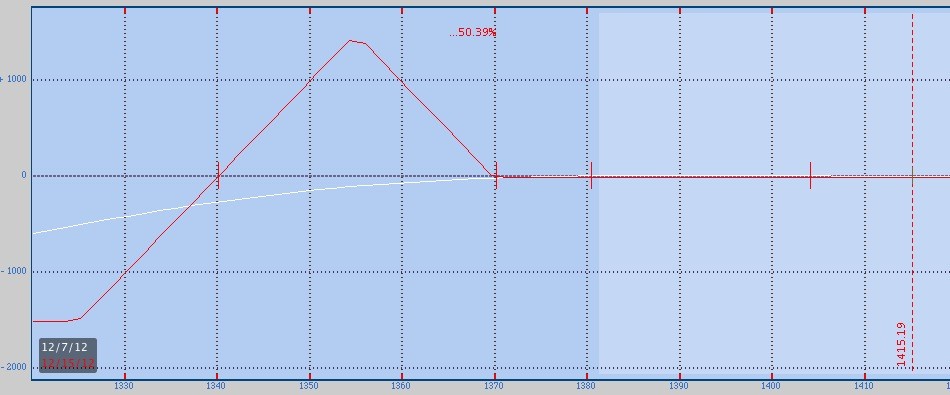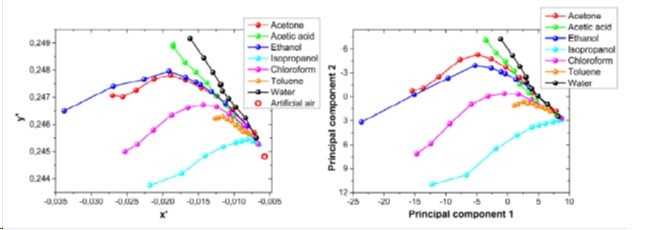A Different Use of the Butterfly
Post on: 7 Апрель, 2015 No Comment

Dan Passarelli — MTKR — Thu Jan 29, 10:39AM CST
- Article Comments (0)
There are several ways to make adjustments or lock in profits on a profitable long call or long put position. One of my favorites has to be converting the option position to a long butterfly spread. It may sound funny, but probably the hardest part about an option trader converting his position to lock in profits with a butterfly spread is getting to a profitable position in the first place; the rest is relatively easy! Let’s take a look at a scenario and an outlook in which this butterfly spread can be considered.
Butterfly Spread on BIDU
Let’s assume an option trader has been watching ABC Inc. (ABC) stock and noticed the stock pulled back slightly from the uptrend in which it has been trading. When ABC stock was trading around $175 in the middle of January, he decides to buy the February 175 call options for 7. Lo and behold about a week later the stock moves higher and it’s trading around $185. The $185 level is potential resistance for the stock because is has previously traded to that area twice before and the trader is concerned it might happen once again. The trader thinks there may be a chance that ABC stock may trade sideways at that level. Converting a long call position to a butterfly spread is advantageous if a neutral outlook is forecast (as in this case). A long butterfly spread has its maximum profit attained if the stock is trading at the short strikes (body of the butterfly) at expiration.
The option trader is already long the February 175 call which constitutes one wing of the butterfly so he needs to sell two February 185 calls which is the body of the butterfly and where the option trader thinks the stock may trade until expiration. $185 represents where the maximum profit can be earned at expiration. A February 195 call (other wing) would need to be purchased to complete the long call butterfly spread.
The original cost of the February 175 call was 7. The two short February 185 calls sell for 5.25 a piece and the long February 195 call costs 2. The converted 175/185/195 long call butterfly spread produces a credit of 1.50 (-7 + 10.50 – 2). Now here’s a look at the possible scenarios that could happen and some possibilities that can be considered.
With ABC stock trading around $185, the February 175 call option has increased in value to 11.25. That means the trader can sell the call and make a profit of $4.25 (11.25 – 7). Certainly this is a viable option and should be considered on some of the contracts before adjusting the position.

Maximum loss for a long butterfly spread is realized if the stock is trading at or below the lowest strike (lower wing) or at or above the highest strike (higher wing). In this case the maximum loss is not a loss at all but a credit of $1.50. In essence, the original $7 potential risk from buying the February 175 call is now erased and has turned into a guaranteed profit even if ABC stock completely collapses. If the stock continues to move higher and past the 195 strike at expiration, the maximum loss is still achieved; albeit a $1.50 profit. But more could have been made by simply keeping the original position intact. That is why it may be prudent if there is more than one contract (long call) to maybe not convert all the positions to a butterfly spread, particularity if the trader thinks that the stock can still climb higher. Keeping the long call would have more profitable if this scenario played out.
Maximum Profit
Maximum profit is achieved if the trader is right and stock closes right at $185 at expiration. The current profit on the trade is $4.25 as discussed above. If ABC stock continues to trade sideways or ends up at $185 at expiration, that $4.25 profit has now grown to an $11.50 profit. The maximum profit for a butterfly spread is derived from taking the difference between the bought and sold strikes which in this case is $10, and adding premium received from converting the position to a butterfly spread ($1.50). Not too bad of a result if ABC stock trades sideways or ends up at $185 at expiration. It seems pretty clear that the long butterfly spread is very beneficial when a sideways outlook is forecast after the long option has profited.
As long as the strike prices align with the trader’s outlook, converting a long call or a long put to a butterfly spread can be very effective after gains are realized. If there are multiple contracts, it allows an option trader to take profits now and also potentially earn more if the stock essentially goes nowhere and ends up close to the short strikes at expiration.
John Kmiecik
Senior Options Instructor














